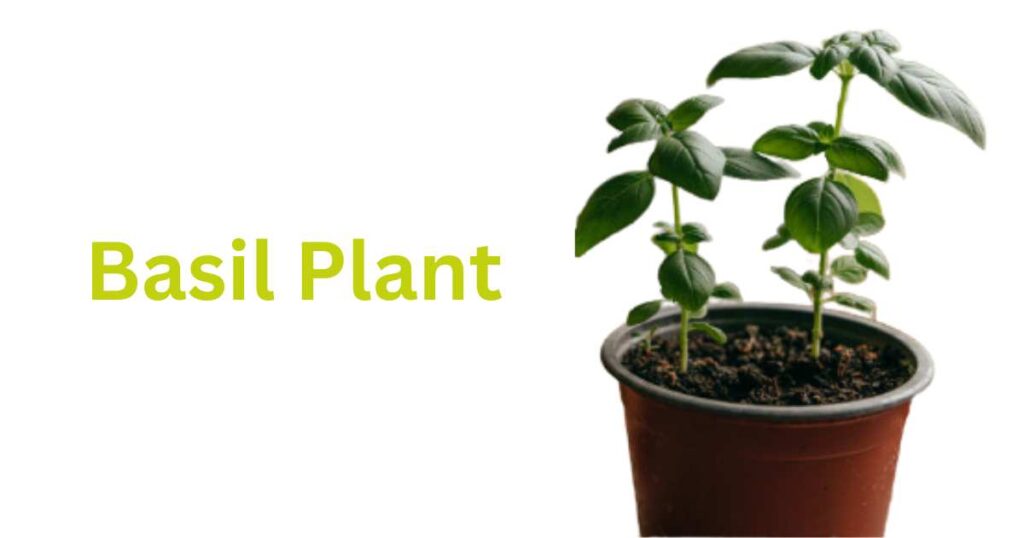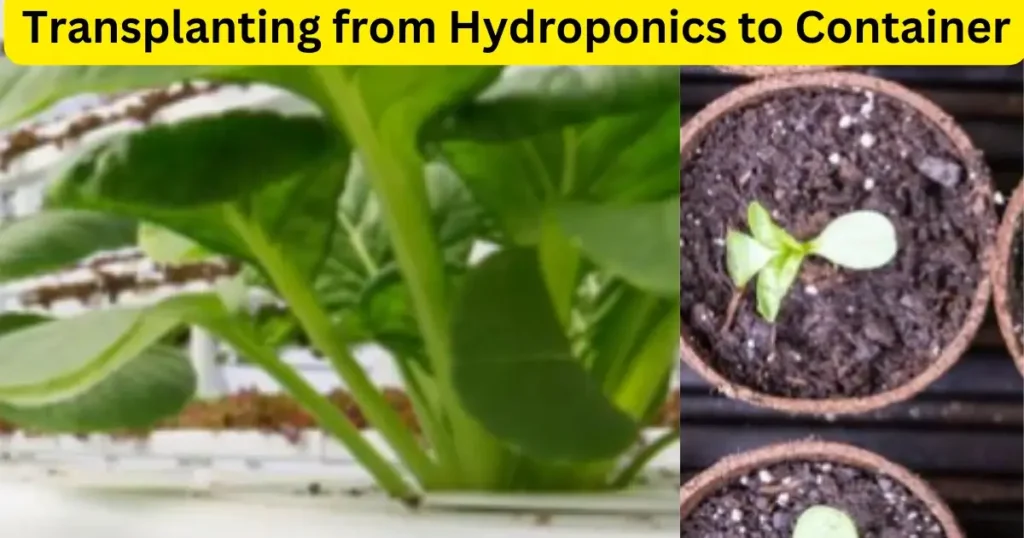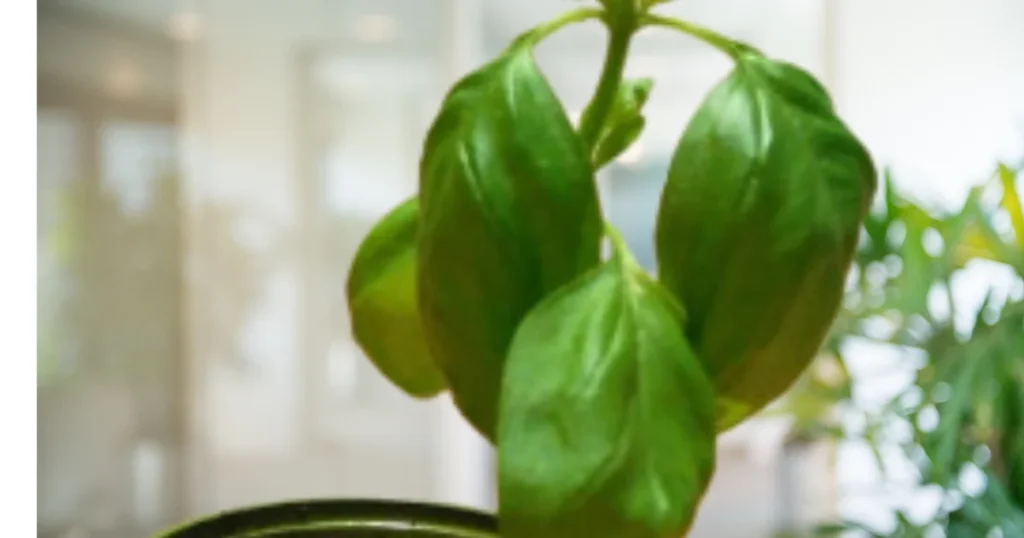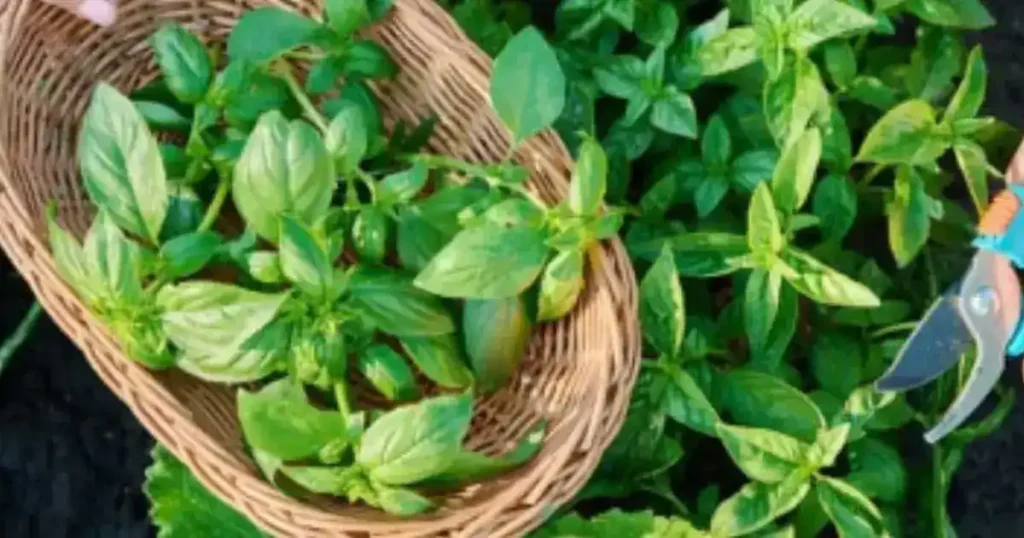Can you transplant hydroponic Basil to soil? The answer is yes to it. But this process is often intriguing to garden enthusiasts and it requires precise steps to follow and exact conditions to meet to ensure successful transplantation.
From identifying the right stage for transplanting seedlings to managing post-transplant care, each aspect plays a crucial role in the survival and optimum growth of your Basil.
Basil Plant

A Basil plant belongs to the family of plants called Lamiaceae or Mints. It’s famous for its’ use in culinary.
Basil typically grows to a height of 12 to 24 inches (30 to 60 centimeters). Its compact size makes it suitable for indoor cultivation, where it can thrive on windowsills or in containers.
Basil is rich in antioxidants and essential oils, known for their anti-inflammatory and antibacterial properties. It is easy to grow both indoors and outdoors, basil thrives in warm, sunny conditions with well-drained soil.
How to Transfer the Hydroponic Basil to Soil?
Your hydroponic Basil plant is growing bigger and it has developed a strong root system and several sets of true leaves. It generally happens around 4-6 weeks after germination. This is the stage to transplant your Basil plant to transplant it into a container.
Transplanting Hydroponic Basil to a Container

It is advisable to first transplant your hydroponic Basil into a container and then to the soil. Follow the following steps:
1. Pulling Up the Hydroponic Basil Plant:
Carefully remove the Basil from the hydroponic system without damaging the roots.
2. Trimming Roots Before Planting:
Lightly trimming the roots can help them adjust to the new soil environment. However, excessive cutting should be avoided as it can stress the plant.
3. Planting Basil Straight into Soil:
While it’s possible to plant Basil directly into the garden soil, starting in a container allows for better control during the initial adjustment period.
4. Preparing the Potting Mix:
A mix of one part peat, one part perlite, and one part vermiculite is recommended. This proportion of potting mix ensures proper drainage, aeration, and moisture retention.
5. Inoculation the Soil with Mycorrhizal Fungi:
Adding mycorrhizal fungi, such as Glomus intraradices (Rizophagus intraradices), G. mosseae, to the potting mix can enhance nutrient uptake. The Basil specific mycorrhizal preparations help the plant to survive transplant shock by increasing the nutrient absorption through fungal hyphae.
When using a prepared Glomus species, follow the manufacturer’s instructions for dosage and time. However, you can use mycorrhizal fungi when transplanting the plant for optimum results.
How to Minimize Transplant Shock While Transplanting Hydroponic Basil to a Container?

When transplanting a hydroponic Basil to a contain, may cause a transplant shock. Let’s discuss the strategies to minimize the transplant shock:
1. Potting Mix Management Strategies:
Good Drainage and Aeration: Essential to prevent waterlogging.
Moisture Retention: Keeps roots hydrated without being soggy.
pH Balance: Basil prefers a slightly acidic to neutral pH (5.5-6.5).
Sterility and Disease-Free: Reduces risk of soil-borne diseases.
Slow Nutrient Release Fertilizer: Provides a steady supply of nutrients.
Lightweight and Pre-Moistened: Eases the transition for the roots.
2. Temperature Management Strategies:
Root Zone Temperature: Maintain a consistent temperature, avoiding extremes.
Air and Ambient Temperature: The ideal range is 65-70°F (18-21°C).
3. pH Management Strategies
Optimal pH Range: 5.5 to 6.5 for healthy growth.
Soil pH Testing and Adjustment: Essential for maintaining the right pH levels.
Transplant Hydroponic Plants to Soil: Transplanting Potted Basil Plants into Soil
Watering: Maintain consistent soil moisture without overwatering.
Fertilization: Use a balanced, slow-release fertilizer.
pH and Nutrients: Monitor and adjust soil pH and ensure the soil is rich in essential nutrients.
Signs of Growth Issues in Basil & How to Resolve them?
Green Leaves: Green leaves are sign of healthy growth. If the color of the leaves remain green after the transplant, it means that the Basil has survived the transplant.
Yellow Leaves: Often a sign of overwatering or poor drainage. Improve soil drainage and reduce watering frequency.
Brown or Wilting Leaves: Can be due to underwatering, too much sun, or transplant shock. Ensure adequate hydration and provide some shade if the plant is in a very sunny area.
Reviving the Root System: If the roots are soggy and brown, it might be root rot due to overwatering or poor drainage. Trim any dead roots and repot the basil in fresh, well-draining soil. For dehydrated roots, increase watering frequency cautiously, ensuring proper drainage.
Stabilizing the Plant: If the plant is loose in the soil, gently repack the soil around the base for stability. If the Basil plant is leaning, tie the plant with stick to help it stay straight.
Managing Soil Moisture: Modify watering schedules based on the plant’s needs and weather conditions. Consider mulching to help retain soil moisture and regulate soil temperature.
How to Harvest Basil so it Keeps Growing?

When the leaves of Basil plant are large, it indicates that that leaves are ready to harvest. Its better to harvest it in the morning time when its’ flavor is at its peak. Start from top to bottom or cut the stem just above a set of growing leaves. This encourages the plant to branch from that point, leading to a fuller plant.
General Care Tips:
By closely monitoring these signs and implementing the appropriate solutions, you can effectively manage the health of your transplanted basil plant and improve its chances of thriving in its new environment.
FAQs
Basil is a famous culinary herb. It does not yield fruit, so its herbaceous nature make it most suitable herb for growing into hydroponics or water environment. You can get fresh Basil with its’ captivating fragrance for your favorite dishes.
You can keep your hydroponic Basil alive by maintaining the pH of solution in a weakly acidic range and a room temperature.
Your hydroponic Basil plant needs in slight warm temperature and change the water once a weak will help your Basil plant keep alive. It also needs at least 8 hours of sunlight everyday.
Hydroponic Basil plant can get diseases that are caused by fungi, bacteria and viruses. The common fungal diseases are root rot caused by Fusarium sp, downy mildew, caused by Peronospora belbahrii and damping-off, caused by Pythium sp.
While, bacterial diseases include, bacterial leaf spot caused by Pseudomonas cichorii etc. While, viral diseases like basil mosaic virus etc.
Nutrient solution should contain the essential micronutrients, like nitrogen, phosphorus, potassium along with iron, calcium and manganese. Moreover, the electrical conductivity of the solution should be around 1.6-2.0.
Conclusion
Can you transplant hydroponic Basil to soil? The simplest answer is yes. But you have to carry out the process with care and follow our steps to keep your Basil plant alive and minimize the transplant shock.

